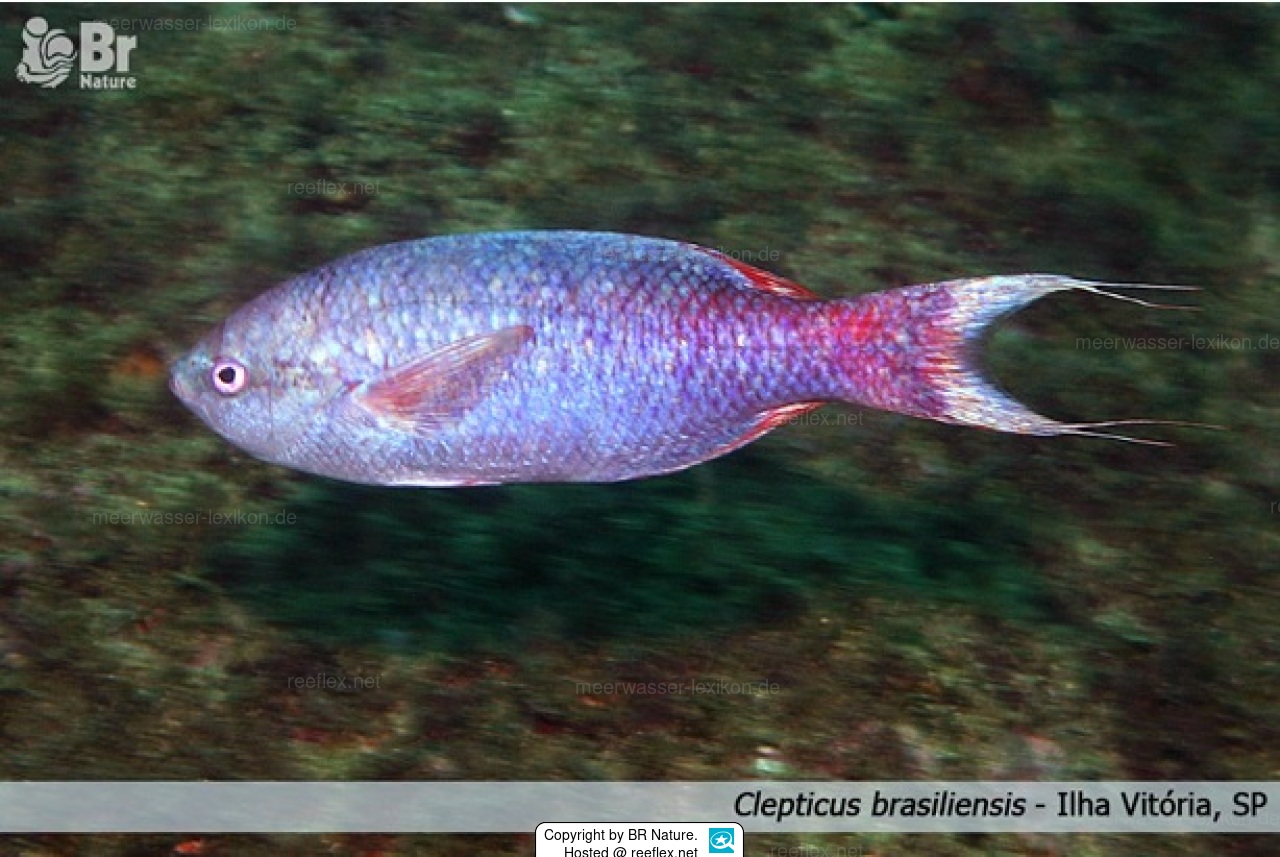Info
Heiser, Moura & Robertson, 2000
Clepticus brasiliensis is endemic to Brazil and is found from Maranhao to Santa Catarina, including St. Pauls rocks, Fernando de Noronha, Trindade Island, and Atol das Rocas.
The wrasse is relatively widespread in Brazil, and is common in many of parts of its range.
Depth:
Lower depth limit (metres): 60
Upper depth limit (metres): 5
Clepticus brasiliensis forms large aggregations along the coast especially in offshore mid-shelf reefs
Source: The IUCN Red List of Threatened Species
Classification: Biota > Animalia (Kingdom) > Chordata (Phylum) > Vertebrata (Subphylum) > Gnathostomata (Superclass) > Pisces (Superclass) > Actinopteri (Class) > Perciformes (Order) > Labroidei (Suborder) > Labridae (Family) > Clepticus (Genus) > Clepticus brasiliensis (Species)
Jumping guard
A jumping guard prevents (nocturnal) fish from jumping out.
Wrasses, blennies, hawkfishs and gobies jump out of an unprotected tank in fright if their night rest is disturbed, unfortunately these jumpers are found dried up in the morning on carpets, glass edges or later behind the tank.
https://www.korallenriff.de/en/article/1925_5_Jump_Protection_Solutions_for_Fish_in_the_Aquarium__5_Net_Covers.html
A small night light also helps, as it provides the fish with a means of orientation in the dark!
Clepticus brasiliensis is endemic to Brazil and is found from Maranhao to Santa Catarina, including St. Pauls rocks, Fernando de Noronha, Trindade Island, and Atol das Rocas.
The wrasse is relatively widespread in Brazil, and is common in many of parts of its range.
Depth:
Lower depth limit (metres): 60
Upper depth limit (metres): 5
Clepticus brasiliensis forms large aggregations along the coast especially in offshore mid-shelf reefs
Source: The IUCN Red List of Threatened Species
Classification: Biota > Animalia (Kingdom) > Chordata (Phylum) > Vertebrata (Subphylum) > Gnathostomata (Superclass) > Pisces (Superclass) > Actinopteri (Class) > Perciformes (Order) > Labroidei (Suborder) > Labridae (Family) > Clepticus (Genus) > Clepticus brasiliensis (Species)
Jumping guard
A jumping guard prevents (nocturnal) fish from jumping out.
Wrasses, blennies, hawkfishs and gobies jump out of an unprotected tank in fright if their night rest is disturbed, unfortunately these jumpers are found dried up in the morning on carpets, glass edges or later behind the tank.
https://www.korallenriff.de/en/article/1925_5_Jump_Protection_Solutions_for_Fish_in_the_Aquarium__5_Net_Covers.html
A small night light also helps, as it provides the fish with a means of orientation in the dark!







 BR Nature
BR Nature


